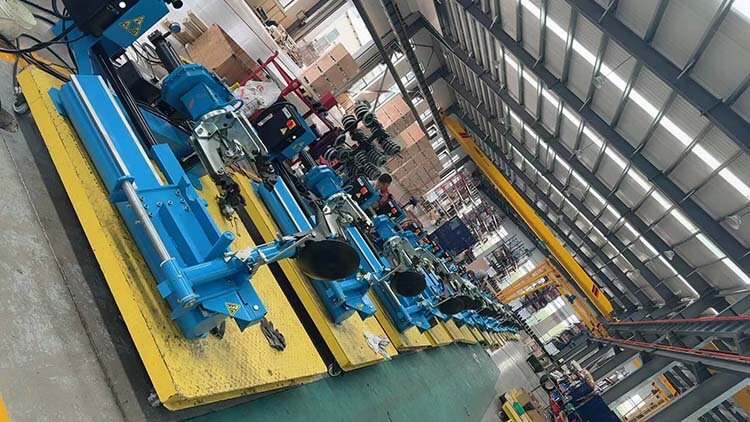How to choose an efficient tire changer for auto repair shops
Auto repair shops need to consider multiple factors when choosing an efficient tire changer. Here are some key points:
Consider tire type and size
- Scope of application: Repair shops may come into contact with various types and sizes of tires, such as tires of different models such as cars, SUVs, trucks, and tires of different aspect ratios and diameters. Therefore, it is necessary to choose a tire changer that is suitable for a wide range of tire sizes. Generally speaking, equipment that can cover tires from 12 inches to 24 inches can meet the needs of most common models.
- Special tire support: If the repair shop often handles some special tires, such as run-flat tires, wide tread tires, or tires with special wheels, it is necessary to choose a tire changer with corresponding special functions or accessories. Some equipment is equipped with special auxiliary tools or clamps to handle these special tires more safely and efficiently.
Pay attention to equipment performance and quality
- Power type: There are three main power types of tire changers: pneumatic, electric, and hydraulic. Pneumatic tire changers have stable power output and fast response speed, and are suitable for frequent use scenarios; electric tire changers are easy to operate, quiet, and have low maintenance costs; hydraulic tire changers have large torque and can easily handle large tires and sturdy wheels. Repair shops can choose according to their own work intensity and needs.
- Torque and clamping force: Sufficient torque and clamping force are the key to ensuring that the tire changer can quickly and smoothly remove and install tires. Generally speaking, equipment with a torque of more than 1000N・m and a clamping force of more than 3000kg can meet most tire replacement needs. For repair shops that often handle large vehicle tires, equipment with greater torque and clamping force should be selected.
- Durability: High-quality tire changers usually use high-strength steel and high-quality components, and have good wear resistance and corrosion resistance. You can check the material, manufacturing process, and user reviews of the equipment to judge its durability. Choose a well-known brand with a good reputation, and its quality and after-sales service are more guaranteed.
Consider the convenience of operation
- Operation method: The operation method should be simple and intuitive, and easy for maintenance personnel to master. Some tire changers are equipped with digital display screens and intelligent control systems, which can be operated by buttons or touch screens to display information such as tire size and operation steps, which is convenient and fast. Some equipment also has functions such as automatic clamping and automatic positioning, which can reduce the complexity of manual operation and improve work efficiency.
- Ergonomic design: The design of the equipment should conform to the principles of ergonomics, and the operating handles, control buttons, etc. should be reasonably located to facilitate maintenance personnel to operate at different angles and postures, reducing the fatigue of operators. For example, the length and angle of the operating handle can be adjusted, and the height of the clamp is suitable for human standing operation.
Focus on after-sales service
- Training support: High-quality after-sales service should include professional training support. Suppliers should be able to provide comprehensive operation training for maintenance shop staff so that they can master the use and maintenance skills of tire changers. The training content can include basic operation of the equipment, daily maintenance, common troubleshooting, etc.
- Accessories supply and maintenance response: During the use of the equipment, it is inevitable that parts will be damaged, so the supplier should be able to provide original accessories in a timely manner to ensure the normal operation of the equipment. At the same time, when the equipment fails, the supplier should have a fast maintenance response capability and be able to arrange maintenance personnel to arrive at the site for maintenance in the shortest time.
Combined with the budget
- Balance between price and performance: When choosing a tire changer, you should consider the balance between price and performance based on the budget of the repair shop. Don't blindly pursue high-priced products, and don't choose equipment with too low performance to save costs. You can compare products of different brands and models, and choose the tire changer with the best cost performance based on the actual needs of the repair shop.
- Long-term cost: In addition to the purchase price, you should also consider the long-term use cost of the equipment, such as energy consumption, maintenance costs, and parts replacement costs. Although some energy-saving tire changers may have a high purchase price, they can save a lot of energy costs in the long-term use process; while some poor-quality equipment may require frequent replacement of parts, which increases the later use cost.


